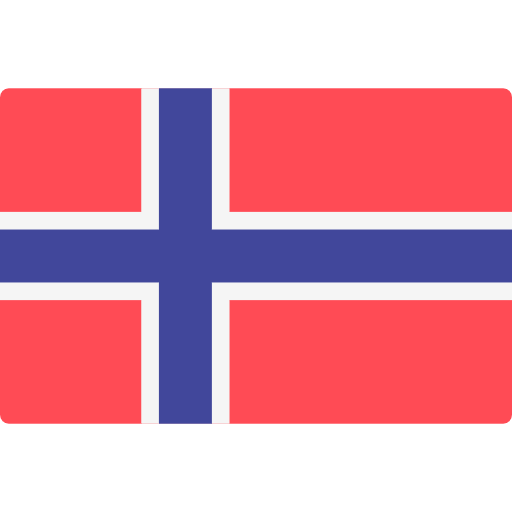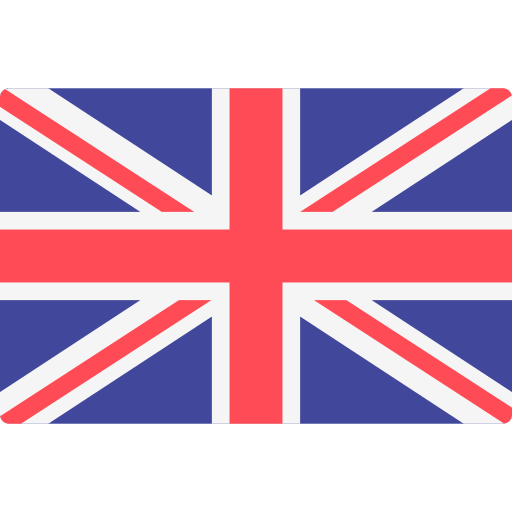Eurofins Toys & Hardlines Monthly Bulletin (November 2025)


Update to Candidate List of Substances of Very High Concern (SVHCs)
On 5 November 2025, the European Chemicals Agency (ECHA) officially added a new substance to the Candidate List of Substances of Very High Concern (SVHCs), bringing the total number of entries to 251.
Please see below a table indicating the latest substance addition:
|
Nº |
Substance name |
EC number |
CAS number |
Reason for inclusion |
Examples of use(s) |
|
1 |
1,1'-(ethane-1,2-diyl)bis[pentabromobenzene](DBDPE) |
284-366-9 |
84852-53-9 |
Very persistent and very bioaccumulative, vPvB (Article 57e) |
Flame retardant |
Legal obligations for companies using SVHCs include:
- Suppliers must provide customers and consumers with sufficient information to ensure the safe use of products that contain an SVHC at a concentration above 0.1% (weight by weight).
- Importers and producers of such products must notify ECHA if their article contains SVHCs above a concentration of 0.1% (w/w), and the substance is present in quantities totalling more than one tonne per producer or importer per year. Notifications must be submitted within six months of the date the substance is included in the list.
- Suppliers of substances on the Candidate List, whether supplied on their own or in mixtures, must provide their customers with a safety data sheet.
- Under the Waste Framework Directive (Directive 2008/98/EC on waste – WFD), any supplier of an article containing an SVHC at a concentration above 0.1% (w/w) on the EU market is required to submit a SCIP notification for that article to ECHA, effective from 5 January 2021. SCIP is the database holding information on substances of concern in articles, whether as such or in complex objects (products), established under the WFD. The SCIP database complements existing notification obligations for Candidate List substances in articles subject to the REACH Regulation and its related communication through the supply chain, in accordance with Articles 7(2) and 33, respectively.
Click here to access the official list on ECHA’s website.
EU Council approves new rules to enhance toy safety
On 13 October 2025, the Council of the European Union gave its final approval to a new regulation on toy safety.
The legislation strengthens existing safety standards and restricts the use of hazardous chemicals, including endocrine disruptors, skin sensitisers, biocidal products, and per- and polyfluoroalkyl substances (PFAS).
In addition, the regulation introduces the Digital Product Passport (DPP), which will contain key safety information about each toy. This will enhance the ability of authorities to detect unsafe products and facilitate customs control.
The regulation will replace the current Directive 2009/48/EC and aligns with the EU’s Chemical Sustainability Strategy, which aims to protect vulnerable consumers, particularly children.
The text must now be approved by the European Parliament before it enters into force. A transition period of four and a half years is foreseen for full implementation.
For more information, please refer to the official publication on the European Union website here.
EU launches CASP 2024 initiative to boost product safety across Member States
In October 2025, the official website of the European Union unveiled details of CASP 2024 (Coordinated Activities on the Safety of Products), a collaborative initiative among national market surveillance authorities to test and ensure the safety of various non-food consumer products across Europe.
As part of this year’s initiative, authorities sampled and tested seven product categories, including:
- Baby soothers and soother holders
- Highchairs
- Light chains
- Mini electric heaters
- Disposable electronic cigarettes
- Children’s bicycles
- Slime toys (re-tested)
All products were examined in accredited EU laboratories to assess compliance with safety standards.
In addition to product-specific testing, CASP 2024 featured horizontal activities such as:
- The use of standards by analogy
- Development of a starter kit for newcomers, featuring interactive digital tools to support market surveillance efforts
The project aims to strengthen consumer protection and harmonise safety practices across EU Member States. Final reports and Safety Gate notifications are available for download directly from the site.
This initiative is managed by the Directorate-General for Justice and Consumers, reinforcing the EU’s commitment to transparency, safety, and collaboration within the internal market.
EU to terminate Timber Trade Agreement with Liberia
On 9 September 2025, the European Commission published a proposal to formally terminate the Voluntary Partnership Agreement (VPA) with Liberia, originally signed in 2011 and in force since December 2013. The agreement aimed to ensure that all timber exported from Liberia to the EU was legally sourced through the implementation of the FLEGT licensing system.
Despite multiple revisions and extensions to the implementation timeline, the FLEGT licensing system has never been launched. After more than a decade of limited progress, the Commission has concluded that it is unrealistic to expect the system to become operational before 2026.
Meanwhile, the new EU Deforestation Regulation (Regulation 2023/1115) requires more effective measures to combat illegal logging and deforestation, rendering the VPA with Liberia outdated.
The EU remains committed to exploring new forms of cooperation with Liberia that better align with current sustainability and zero-deforestation goals. It will pursue official termination of the VPA through written notification, as permitted under Article 29 of the agreement, to preserve the credibility of EU trade instruments and strengthen alignment with modern environmental policies.
For more information, please refer to the official proposal in the European Commission website here.
New EU regulation enhances transparency on product guarantees
On 2 October 2025, the European Commission adopted Commission Implementing Regulation (EU) 2025/1960, introducing harmonised formats for consumer guarantee notices and labels. This regulation marks a significant step towards empowering consumers and promoting sustainable consumption across the EU.
From 27 September 2026, the new requirements will include:
- Harmonised notice on the legal guarantee of conformity: Consumers must be clearly informed of their right to a minimum two-year guarantee for goods that fail to meet contractual standards.
- Harmonised label for the commercial guarantee of durability: Producers may voluntarily highlight product durability using a standardised label that includes:
- A tick-mark symbol
- Guarantee duration in years
- A QR code linking to detailed information
- A multilingual phrase: “producer guarantee in years”
For full details, visit the official publication on the EUR-Lex portal.
The table below summarises the most recent standard updates and upcoming dates of withdrawal (non-exhaustive):
(*) Date of availability: The date when the definitive text in the official language versions of an approved CEN/CENELEC publication is distributed by the Central Secretariat.
|
The European Committee for Standardisation (CEN)/CENELEC |
|||
|
Reference |
Title |
Date of availability(*) |
Supersedes |
| EN 71-14:2025 |
Safety of toys - Part 14: Trampolines for domestic use |
29 October 2025 |
EN 71-14:2018 |
Draft proposal on the disclosure of information on discarded unsold consumer products
On 9 September, the European Commission published a draft implementing regulation under Regulation (EU) 2024/1781, introducing new requirements for companies to report on the destruction of unsold consumer products. This measure forms part of the EU’s strategy to promote sustainability and reduce waste.
From its expected entry into force in 2026, large companies — and from 2030, medium-sized companies — will be required to:
- Report annually on the quantity and weight of unsold consumer products that have been discarded
- Explain the reasons for discarding them
- Detail the waste treatment methods used (e.g., recycling, destruction, reuse)
- Describe preventive measures taken to avoid future destruction
Information must be presented in a standardised format, as outlined in the draft implementing regulation, and products must be classified using Combined Nomenclature (CN) codes in accordance with Regulation (EEC) No 2658/87.
For more information, please refer to the draft regulation on the EUR-Lex portal.
EU issues draft correction to BPA regulation to clarify scope and deadlines
On 10 September 2025, the European Commission published a draft amendment to Regulation (EU) 2024/3190, which governs the use of Bisphenol A (BPA) and related substances in food contact materials. The correction addresses terminological inconsistencies, scope clarifications, and transitional deadlines to ensure proper enforcement of the regulation.
The original regulation, adopted in December 2024, introduced a sweeping ban on BPA and other hazardous bisphenols due to their endocrine-disrupting and reproductive toxicity risks. However, several technical errors were identified, prompting the Commission to issue a formal correction.
For full details, the draft correction can be accessed here.
European Commission proposes targeted solutions to the implementation of EU Deforestation Regulation
On 21 October 2025, the European Commission presented a proposal to adjust the EU Deforestation Regulation to ensure smooth and effective implementation. The proposal introduces transitional arrangements and clarifies due diligence obligations.
Key points:
- Large and medium-sized companies must comply from 30 December 2025, with a six-month adaptation period
- Micro and small enterprises must comply from 30 December 2026
- Micro and small operators from low-risk countries will only need to submit a one-off due diligence statement
- Downstream operators and traders marketing products already placed on the EU market will not need to file separate statements
- The Commission aims to ensure the EUDR’s IT system is fully operational to support traceability
- Clearer definitions for covered products and updated procedures for assessing producer-country risk levels are proposed
- Strengthened coordination among competent authorities is intended to ensure consistent enforcement and reduce administrative burdens
These adjustments are designed to simplify compliance and reduce administrative costs while maintaining the EUDR’s environmental objectives.
The proposal now awaits formal adoption by the European Parliament and the Council. For more information, read the official proposal.
Publications on European Commission initiatives
The table below summarises recent publications on European Commission initiatives related to environmental and consumer topics:
| Date | Title |
|
10 October 2025 |
Consumer Agenda 2025-2030 and action plan on consumers in the Single Market The strategy contains a list of measures to be taken in 2025-2030, including:
The Commission adoption is planned for fourth quarter 2025. |
|
6 November 2025 |
The Act will facilitate the free movement of ‘circular’ products, secondary raw materials and waste. It will also increase the supply of high-quality recycled materials and stimulate demand for these materials in the EU. The Commission adoption is planned for fourth quarter 2026. |
See below a table summarising some recent ASTM standards updates:
| Reference | Title |
|
ASTM F1313-25 |
Standard Specification for Volatile N-Nitrosamine Levels in Rubber Nipples on Pacifiers |
|
ASTM F2933-25 |
Standard Consumer Safety Specification for Crib Mattresses |
Proposal to include plastic puzzle ground mats to the mandatory inspection scope
On 15 August 2025, the Taiwan Bureau of Standards, Metrology and Inspection (BSMI) notified the WTO via document G/TBT/N/TPKM/567 that plastic puzzle ground mats sold on the Taiwan market will be included in the scope of mandatory inspection. The regulation is proposed to enter into force on 1 July 2026.
Key regulatory elements:
| Aspect | Details |
|
Products covered |
Plastic puzzle ground mats classified under HS Codes 39 (Plastics and articles thereof) and 95 (Toys, games, and sports requisites). |
|
Reference HS code |
3918.10.90.90.5-C 9503.00.93.90.3-A |
|
Regulatory framework |
To be implemented under the Commodity Inspection Act. |
|
Conformity assessment procedure |
Declaration of Conformity (DoC) — manufacturers or importers must declare compliance with relevant safety standards before placing products on the market. |
|
Health concerns addressed |
Contamination by plasticisers, heavy metals, and formamide. |
|
Objective |
Protection of human health and safety. |
|
Test method |
CNS 15493 |
Background:
Plastic puzzle ground mats may contain plasticisers, heavy metals, and formamide, which pose endocrine-disrupting and carcinogenic risks. BSMI found that 37% of randomly sampled mats failed to meet formamide content requirements. In response, BSMI intends to regulate safety and quality standards for these products through a Declaration of Conformity procedure.
Proposed amendments to the scope of mandatory inspection requirements for toys
On 15 August 2025, Taiwan BSMI notified the WTO via document G/TBT/N/TPKM/568 of proposed amendments to the mandatory inspection requirements for “Toys, Games and Sports Requisites; Parts and Accessories Thereof.” The amendment will remove plastic puzzle ground mats from the toy category and include them under a new inspection category to avoid regulatory overlap and enhance risk-based supervision.
Proposed entry into force: 1 July 2026
Covered toys:
All toys intended for children under 14 years old, as specified in CNS 4797, including:
- All items listed under accessory toys of cribs or playpens
- Bathroom/aquatic toys
- Ride-on or push toys
- Musical toys
- Inflatable toys
- Scenario toys
- Simulation toys
- Toys that children can enter
- Large-scale assembled facilities for playgrounds
- Toy weapons
- Transportation toys
- Remote/voice control toys
- Electronic toys
- Traditional folklore and folk game toys
- Food toys
- Festival/cosplay toys
- Sport/competition toys
- Scientific and technological education toys, and parts or items listed under human-form/non-human form toys (non-stuffed toys)
- Construction toys (assembly potential-development magnetic blocks)
- Entertainment toys (ball houses/pools, push-and-pull toys, rocking horses, bubble blowing kits, kaleidoscopes, kites, prankish toys)
- Pre-school toys (drawing sets)
- Intelligence toys (Rubik’s cubes, construction toys, assembling (model) toys, toys made of magnetic substances)
- Arts & crafts toys (clay, sand painting, non-paper craft materials which can be assembled into a toy)
- Stationery toys (toys made of magnetic substances)
- Toys with accessory functions (recorder, toys with suction cups, toys sold with other commodities or as a gift) as listed in Annex A of CNS 4797, excluding puzzle mats)
Applicable standards:
Toys are subject to the following inspection standards and sections:
- CNS 4797:2019
- CNS 4797-1:2014
- CNS4797-2:2022
- CNS 4797-3:2015
- CNS 4797-4:1996
- CNS 4797-5:1996
- CNS 14276:2020 Section 5 (5.7.6 excluded), 7, 8, 9(9.8 and 9.10 excluded), 10.2, 12, 13(13.8 excluded), 14, 15.1, 15.2, 16, 17, and 18
- CNS 4797-6:2020 Section 4.3, List 1, 2C, and 2D (bisphenol A)
- CNS 4797-9:2020
- CNS 4797-11:2021 Section 4.4, 4.5.1, and 4.7
- For flying toys only, ISO 8124-1:2022 section 4.19, 5.24.6, 5.24.7, 5.36, Annex B.2.24, B.3.10, and E.33
Description of the conformity assessment procedures (Inspection Scheme):
- Monitoring Inspection (MI) Scheme
- Simplified batch-by-batch inspection based on a confidence-building process.
- After consistent compliance, inspections may move to random or document-based verification.
- Inspection applications may be submitted at ports of entry or at domestic manufacturing sites (in person, by mail, or online).
- Fee: 0.25% of CIF value per batch.
- Products must be registered with BSMI and display the assigned registration number (M00000).
- Registration of Product Certification (RPC) Scheme
- Requires type testing (Module 2) by BSMI or designated laboratories and a declaration of conformity to type (Module 3).
- Certified products may bear the Commodity Inspection Mark (with “R”) and can clear customs directly.
- Fees: NT$5,000 application fee and NT$200 annual fee per product type.
- Certificates are valid for three years.
Additional requirements and notices
- Toys must comply with the Directions Governing the Inspection of Toy Commodities.
- Inspection standards are as published in the latest BSMI announcements; updates will be published as they occur.
- The CCCN/HS codes listed in the regulation serve as reference only. Compliance obligations remain regardless of classification by customs or trade authorities.
- Interlocking toy mats, previously classified as children's toys, will be incorporated into the category of “interlocking soft foam floor mats” effective 1 July 2026. The inspection method will be revised from surveillance inspection or certification registration to a declaration of conformity.
- For those who obtained interlocking toy mat certification registration certificates before 1 July 2026, the reporting party must complete conformity declaration registration by 30 June 2026, using the original type test report and preparing the product type classification table.
TISI proposes revision of mandatory standard for plastic food bags
On 18 July 2025, Thailand’s TISI notice the WTO (G/TBT/N/THA/691/Rev.2) that the agency was revised the draft Ministerial Regulation on plastic bags used for food (made of polyethylene (PE) or polypropylene (PP)) conform to the updated mandatory standard TIS 1027-25XX. The previous versions TIS 1027-2567(2024) will be replaced.
The proposed date of entry into force: After 180 days following the date of its publication in the Government Gazette
The regulation targets plastic food bags classified under relevant HS and ICS codes (ICS 55.080; 67.250; 83.140.99).
The proposed regulation is intended to enhance consumer protection by ensuring that plastic food-contact bags meet up-to-date safety and quality benchmarks. The revision emphasizes alignment with international standards and aims to reduce risks associated with plastic packaging in food use.
Supporting references & standards:
The draft regulation cites multiple domestic and international standards for reference, including:
- JIS Z 1702:1994 (2022) Polyethylene films for packaging
- JIS Z 1707:2019 General rules of plastic films for food packaging
- JIS Z 1711:1994 (2020) Polyethylene film bags
- ASTM D882-18 Test method for tensile properties of thin plastic sheeting
- EN 1186-3:2022 Plastic materials in contact with food; migration test methods
- TIS 656-2556 analytical methods for food contact plastics
- TIS 1310-2538 plastic recycling symbols
TISI proposes revision of mandatory standard for microwavable plastic food bags
On 18 July 2025, Thailand’s TISI notified the WTO (G/TBT/N/THA/692/Rev.2) that the agency had revised the draft Ministerial Regulation on microwavable plastic food bags used for reheating to conform to the updated mandatory standard TIS 3022-25XX. The previous versions TIS 3022-2567 (2024) will be replaced.
Under the draft regulation, plastic bags intended for food reheating in microwaves and having food contact layers made of PE (polyethylene) or PP (polypropylene) must comply with this updated standard.
The proposed date of entry into force: 180 days following the date of its publication in the Government Gazette.
Key features & requirements:
Below are the highlights from the draft standard and regulation:
| Feature | Draft requirement |
|
Scope |
Covers plastic bags for single reheating in microwave ovens. Must withstand at least 80 °C. |
|
Material/Layering |
The food-contact layer must be PE or PP. Other layers (non-food contact) may use other materials if compliant. |
|
Dimensions & tolerances |
Width, length, and thickness must conform to specified tolerances (e.g., ±5 µm for thickness). |
|
Mechanical & thermal performance |
Bags must undergo tests for microwave heating, temperature resistance, and usage durability (e.g., no melting, no damage). |
|
Migration limits |
Food contact layers must pass migration tests; the amount of substances migrating into food simulants must be under specified limits (e.g., per EN 1186-3:2022). |
|
Metal contaminants |
Limits are specified for various heavy metals (lead, cadmium, etc.) that may leach; some must be “not detected” under given detection limits. |
|
Labelling & markings |
The packaging must show product name, dimensions, thickness, temperature limits, usage instructions, and food-contact safe symbols. |
|
Sampling & testing |
Procedures for sampling and decision criteria are included in annexes of the draft standard. |
Supporting references & standards:
The draft regulation cites multiple domestic and international standards for reference, including:
- ASTM D882–18 Standard Test Method for Tensile Properties of Thin Plastic Sheeting
- ASTM F88 / F88M -21 Standard Test Method for Seal Strength of Flexible Barrier Materials
- EN 1186-3:2022 Materials and articles in contact with foodstuffs - Plastics - Part 3: Test methods for overall migration in evaporable simulants
- TIS 619-2529 (1986) Pressure sensitive adhesive crepe masking tapes
- TIS 656-2556 (2013) Analytical methods for food contact plastics
- TIS 1027-25XX (20XX) Plastic bags for food
- TIS 1069-2552 (2009) Colourants for plastics for food contact use
- TIS 1773-2548 (2005) Microwave ovens safety requirements
- TIS 60335 Part 2(90)-2564 (2021) Household and similar electrical appliances -safety -Part 2-90: Particular requirements for commercial microwave
- TIS 2493 Part 1-2556 (2013) Plastic food containers for microwave oven Part 1 for reheating
- TIS 2493 Part 2-2556 (2013) Plastic food containers for microwave Part 2 for single reheating
- Notification of the Ministry of Public Health (No. 435) B.E. 2565 (2022) Re: Qualities or standard for container made from plastic
Update to the international toys safety standard ISO 8124-4:2025
On 6 June 2025, ISO published ISO 8124-4:2025, the new edition of the standard on activity toys for domestic use (swings, slides, see-saws, climbing frames, etc.).
This updated edition replaces ISO 8124-4:2014 (with its amendments) and incorporates changes aimed at enhancing child safety, aligning more closely with related standards (e.g., EN 71-8, ASTM F1148), and expanding the scope of regulated hazards.
Below is an overview of the key features and changes, implications for reference:
Key features & changes in ISO 8124-4:2025:
| Area | What's new/revised | Why it matters |
|
Scope & inclusion |
The standard now more explicitly covers activity toys for indoor and outdoor family use intended for children under 14 years. Inflatable activity toys are included (except continuous blower systems, which fall under IEC 60335-2-80). Pools deeper than 400 mm are excluded. |
Clarifies exactly which products fall under the standard — important to avoid gaps or overlap with other standards and regulations. |
|
Definitions & terminology |
New or revised definitions include activity toy, barrier, declined plane, hand-gripping component, hand-grasping component, and resilient behaviors. |
More precise definitions help ensure consistent interpretation and testing. |
|
Alignment with other standards |
The new ISO version aligns many requirements and test methods with EN 71-8, ASTM F1148. |
Helps harmonise global safety requirements, reducing duplication and conflicting results. |
|
Materials & degradation |
Requirements are now added for materials to resist environmental degradation (e.g., UV, moisture) over time. |
Ensures that toys remain safe under real-world aging and exposed conditions. |
|
Mechanical & structural safety |
Enhanced and new requirements for: • Hardware, ropes, suspension means • Crush, shear, entrapment zones • Barriers, handrails, stairs, hand-gripping / grasping • Stability and strength (static, dynamic) • Slide geometry, run-out, start section • Swing clearance, coupling, impact limits • See-saw pinching / finger risk • Anchoring and corner provisions on inflatable toys |
Addresses a wide range of real hazard scenarios that children may encounter when using activity toys. |
|
Warnings, labelling & instructions |
More specific requirements for labelling, operating instructions, installation guidance, warnings (e.g., drowning risk in pools) |
Helps ensure proper use, reduce misuse risks, and improve user awareness. |
Implications for interested parties:
- Manufacturers & designers
- Should review and possibly redesign certain structural elements (e.g., barrier heights, grip zones, coupling design).
- Materials selection must consider durability under outdoor exposure.
- Instructions and warnings may need revision to comply with the new standard.
- Importers & distributors
- Need to verify compliance under the new edition when placing toys on the market.
- Older stock tested only under ISO 8124-4:2014 may require retesting or justification.
Below you will find a monthly summary of product recalls and alerts in Europe (Source: “Safety Gate (RAPEX)” and "European Commission Rapid Alert System for Food and Feed (RASFF)", the United Kingdom (Source: "OPSS") and the United States (Source: “CPSC”).
Safety Gate (RAPEX) (European Commission Rapid Alert System for dangerous non-food products – Alerts reported by EU national authorities).
The following 81 alerts regarding toys, childcare articles, and children's equipment products were reported between week 36 and week 39 of 2025.
|
Type of Risk |
Number of Alerts |
Notes |
|
Asphyxiation |
2 |
Inflatable toy The plastic bag packaging is too thin. The product does not comply with the Toy Safety Directive. |
|
Chemical |
3 |
Balloons The rubber of the balloons releases an excessive amount of nitrosamines and also releases an excessive amount of nitrosatable substances which generate nitrosamines. The product does not comply with the Toy Safety Directive or EN 71-12. |
|
1 |
Crayon set The migration of strontium and aluminium from the toy is too high. The product does not comply with the Toy Safety directive or EN 71-3. |
|
|
1 |
Inflatable swim ring The plastic material of the product has an excessive concentration of bis(2-ethylhexyl) phthalate (DEHP) and di-‘isononyl’ phthalate (DINP). The product does not comply with the REACH Regulation. |
|
|
1 |
Inflatable toy boat The plastic material in the product has an excessive concentration of bis(2-ethylhexyl) phthalate (DEHP). T he product does not comply with the REACH Regulation. |
|
|
1 |
Lunch box The plastic material of the product has an excessive concentration of bis(2-ethylhexyl) phthalate (DEHP). The product does not comply with the REACH Regulation. |
|
|
1 |
Medical kit toy The plastic material in the product has an excessive concentration of bis(2-ethylhexyl) phthalate (DEHP). The product does not comply with the Toy Safety Directive or the REACH Regulation. |
|
|
1 |
Modelling paste The migration of boron from the toy is too high. The product does not comply with the Toy Safety Directive or EN 71-3. |
|
|
3 |
Plastic toy The plastic material of the product has an excessive concentration of bis(2-ethylhexyl) phthalate (DEHP). The product does not comply with the REACH Regulation. |
|
|
6 |
Toy slime The migration of boron from the toy slime is too high. The product does not comply with the Toy Safety Directive or EN 71-3. |
|
|
Chemical, choking |
1 |
Plush Toy The product has a small part that can easily detach. Additionally, the plastic material of the toy has an excessive concentration of bis(2-ethylhexyl) phthalate (DEHP) and dibutyl phthalate (DBP). The product has a small part that can easily detach (the metal ring). The product does not comply with the Toy Safety Directive. |
|
1 |
Toy bricks set The battery compartment can easily be opened without use of any tools and the button cell batteries inside are easily accessible. The product does not comply with the Toy Safety Directive or EN 62115. |
|
|
3 |
Toy LED The battery compartment can easily be opened without use of any tools and the button cell batteries inside are easily accessible. The product does not comply with the Toy Safety Directive or EN 62115. |
|
|
1 |
Toy flashing slingshot The battery compartment can easily be opened without use of any tools and the button cell batteries inside are easily accessible. The product does not comply with the Toy Safety Directive or EN 62115. |
|
|
Choking |
3 |
Musical toy The product has small parts that can easily detach. A small child may put them in their mouth and choke. The product does not comply with the Toy Safety Directive or EN 71-1. |
|
1 |
Bath toy The product has small parts that can easily detach. The product does not comply with the Toy Safety Directive or EN 71-1. |
|
|
1 |
Bubble producing toy Small parts can easily detach from the toy. The product does not comply with the Toy Safety Directive or EN 71-1. |
|
|
1 |
Key ring with soft toy Small parts can easily detach. The product does not comply with the Toy Safety Directive or EN 71-1. |
|
|
2 |
Keyring Small parts can easily detach. The product does not comply with the Toy Safety Directive or EN 71-1. |
|
|
1 |
Light up toy The product is not sufficiently resistant to mechanical impact. It can break into small parts upon impact. The product does not comply with the Toy Safety Directive. |
|
|
11 |
Soft toy The fibrous stuffing material of the toy is easily accessible due to the weakness of the seams, and it has small parts which can easily detach. The product does not comply with the Toy Safety Directive or EN 71-1. |
|
|
1 |
Wooden toy The product has small parts (the round components) that can easily detach. The product does not comply with the Toy Safety Directive. |
|
|
2 |
Plastic toy The toy figure is a small part. A small child may put it in the mouth and choke. The product does not comply with the Toy Safety Directive. |
|
|
2 |
Picture book The product has small parts that can easily detach. The product does not comply with the Toy Safety Directive. |
|
|
2 |
Toy rattle The rattle has protruding parts and contains small parts (the balls) that can easily detach. The product does not comply with the Toy Safety Directive or EN 71-1. |
|
|
3 |
Rattle set The rattles' elements can easily break, resulting in small parts. The product does not comply with the Toy Safety Directive or EN 71-1. |
|
|
1 |
Toy gun set The bubbles which are used as projectiles for the toy gun are swelling materials, expanding 50% in size when in contact with water. If a child puts them in the mouth or swallows it, the contact with saliva or stomach liquids will cause the projectiles to expand, which can result in occlusion of the respiratory track or intestinal blockage. The product does not comply with the Toy Safety Directive or EN 71-1. |
|
|
1 |
Toy unicorn The product has small parts. The product does not comply with the Toy Safety Directive or EN 71-1. |
|
|
1 |
Mobile toy The product has several small parts which can easily detach. Moreover, the hanging element of the toy can also easily break, releasing small parts. The product does not comply with the Toy Safety Directive or EN 71-1. |
|
|
1 |
Toy car The product has small parts that can easily detach. Moreover, safety information is missing. The product does not comply with the Toy Safety Directive. |
|
|
1 |
Wooden stacker toy The toy has an unprotected protruding part (base pin), a detachable small part (orange puck) and the shape and dimension of the toy's element (red ball) are inadequate. The product does not comply with the Toy Safety Directive or EN 71-1. |
|
|
1 |
Toy baby bottles The product is too small. The product does not comply with the Toy Safety Directive or EN 71-1. |
|
|
1 |
Wooden toy The product has small parts (the round components) that can easily detach. The product does not comply with the Toy Safety Directive. |
|
|
Choking, injuries, strangulation |
1 |
Key ring with soft toy The toy has small parts (key ring) which may easily detach. Moreover, the retractable cord is too long and can become trapped during various activities of a child. The product does not comply with the Toy Safety Directive or EN 71-1. |
|
Choking, strangulation |
1 |
Chew necklace The teethers are too small and could fit in a child’s mouth. Moreover, the cords have a combined length that exceeds the maximum permitted length. The product does not comply with the Toy Safety Directive. |
|
1 |
Toy swing Due to the incomplete instructions provided, the swing can be installed too high, leaving openings where the child can have its head entangled. Moreover, a fragment of excess material is easily accessible and can easily detach. The product does not comply with the Toy Safety Directive, EN 71-1, or EN 71-8. |
|
|
Cuts, damage to sight, injuries |
2 |
Climbing toy The toy has a sharp corner. Moreover, the toy is not stable enough and can cause the child to fall. The product does not comply with the Toy Safety Directive, EN 71-1, or EN 71-8. |
|
Environment |
1 |
Toy ball The solders in the product have an excessive concentration of lead. The product does not comply with the Directive on the restriction of the use of certain hazardous substances in electrical and electronic equipment (RoHS 2 Directive). |
|
1 |
Electronic game The solders in the product have an excessive concentration of lead and cadmium. The product does not comply with the Directive on the restriction of the use of certain hazardous substances in electrical and electronic equipment (RoHS 2 Directive). |
|
|
1 |
Toy car with track The solders in the product have an excessive concentration of lead. The product does not comply with the Directive on the restriction of the use of certain hazardous substances in electrical and electronic equipment (RoHS 2 Directive). |
|
|
1 |
Headband The solders in the product have an excessive concentration of lead. The product does not comply with the Directive on the restriction of the use of certain hazardous substances in electrical and electronic equipment (RoHS 2 Directive). |
|
|
1 |
Toy guitar The solders in the product have an excessive concentration of lead and cadmium. The product does not comply with the Directive on the restriction of the use of certain hazardous substances in electrical and electronic equipment (RoHS 2 Directive). |
|
|
1 |
Musical toy The solders in the product have an excessive concentration of lead. The product does not comply with the Directive on the restriction of the use of certain hazardous substances in electrical and electronic equipment (RoHS 2 Directive). |
|
|
Injuries |
1 |
Balloon pumper The filling pressure may increase upon pumping, and the product might rupture. The product does not comply with the Toy Safety Directive. |
|
1 |
Water balloons The toy has small parts (magnets) with a high magnetic flux, which can be easily detached from the balloon. A child may put the magnets in the mouth and swallow them, which may lead to them attracting one another. The product does not comply with the Toy Safety Directive. |
|
|
1 |
Magnetic toy The toy contains small magnets with a high magnetic flux. If a child swallows the small magnets, they could attract one another causing intestinal blockage or perforation. The product does not comply with the Toy Safety Directive or EN 71-1. |
|
|
Strangulation |
1 |
Activity toy The toy set features a long cord. This cord can become wrapped around a child's neck during various activities. The product does not comply with the Toy Safety Directive. |
|
1 |
Children's swing The fabric of the swing can form loops during use. A small child's head or neck can get trapped. The product does not comply with the Toy Safety Directive. |
|
|
Suffocation |
2 |
Baby sleeping bag The product has no arm openings. As a result, the baby may slip down into the sleep bag. The product does not comply with General Product Safety Regulation. |
The following 12 alerts regarding jewellery were reported between week 36 and week 39 of 2025.
|
Type of Risk |
Number of alerts |
Notes |
|
Chemical |
1 |
Earrings The product has an excessive concentration of Cadmium. The product does not comply with REACH Regulation. |
|
1 |
Piercing jewellery The rate of nickel release is too high. The product does not comply with REACH Regulation. |
|
|
3 |
Necklace The product has an excessive concentration of Cadmium. The product does not comply with REACH Regulation. |
|
|
3 |
Bracelet The product has an excessive concentration of cadmium. The product does not comply with the REACH Regulation. |
|
|
4 |
Ring The product has an excessive concentration of Cadmium. The product does not comply with REACH Regulation. |
The following 3 alerts regarding furniture were reported between week 36 and week 39 of 2025.
|
Type of Risk |
Number of alerts |
Notes |
|
Injuries |
1 |
Office chair The chair is unstable and can tip over during use. Moreover, the seat support structure can deform, or the seat support base can crack. The product does not comply with the General Product Safety Directive or EN 1335-2. |
|
1 |
Furniture set The door and drawer handles have sharp edges. The product does not comply with the General Product Safety Regulation or EN 14749. |
|
|
1 |
Furniture set The construction of the furniture, particularly the legs and tabletop, can easily break underweight and can therefore collapse. The product does not comply with the General Product Safety Regulation. |
The following 27 alerts regarding miscellaneous consumer products were reported between week 36 and week 39 of 2025.
|
Type of Risk |
Number of alerts |
Notes |
|
Burns, fire |
1 |
Deep fryer The contactors built into the deep fryer are not triggered when the temperature is above the permitted level. The oil can continue to heat up. The product does not comply with the requirements of the Low Voltage Directive nor with EN 60335-1 and EN 60335-2-37. |
|
Chemicals |
1 |
Bath mat The plastic material of the product has an excessive concentration of bis(2-ethylhexyl) phthalate (DEHP). The product does not comply with the REACH Regulation. |
|
1 |
Camping shower The plastic material of the product has an excessive concentration of bis(2-ethylhexyl) phthalate (DEHP) and dibutyl phthalate (DBP). The product does not comply with the REACH Regulation. |
|
|
1 |
Hiking backpack The green and black plastics used in the product have an excessive concentration of bis(2-ethylhexyl) phthalate (DEHP). The product does not comply with the REACH Regulation. |
|
|
1 |
Tablecloth The plastic material of the product has an excessive concentration of bis(2-ethylhexyl) phthalate (DEHP). The product does not comply with the REACH Regulation. |
|
|
1 |
Wallpaper The plastic of the product has excessive concentrations of bis(2-ethylhexyl) phthalate (DEHP). The product does not comply with the REACH Regulation. |
|
|
2 |
Tablecloth The plastic of the product has excessive concentrations of bis(2-ethylhexyl) phthalate (DEHP). The product does not comply with the REACH Regulation. |
|
|
1 |
Pliers The plastic material of the product has an excessive concentration of diisobutyl phthalate (DIBP), dibutyl phthalate (DBP) and bis(2-ethylhexyl) phthalate (DEHP). The product does not comply with the REACH Regulation. |
|
|
1 |
Massage ball The plastic material of the product has an excessive concentration of diisobutyl phthalate (DIBP). The product does not comply with the REACH Regulation. |
|
|
Chemical, Environment |
1 |
Jewellery bag The product has excessive concentrations of short chain chlorinated paraffins (SCCPs), bis(2ethylhexyl) phthalate (DEHP) and cadmium. The product does not comply with the Persistent Organic Pollutants (POP) Regulation nor with the REACH Regulation. |
|
1 |
Boxing gloves The plastic material of the packaging has excessive concentrations of bis(2-ethylhexyl) phthalate (DEHP), cadmium and short-chain chlorinated paraffins (SCCPs). The product does not comply with the REACH Regulation nor with the Persistent Organic Pollutants (POP) Regulation. |
|
|
Choking |
1 |
Decorative cherries The product can easily be mistaken with foodstuff due to its appearance, colour, form and shape. The product does not comply with the General Product Safety Regulation. |
|
Cuts, Injuries
|
1 |
Telescopic ladder The metal parts of the ladder may bend and collapse during repeated normal use. As the ladder exceeds 3 metres in height and was supplied without a stabiliser bar, this could lead to the user falling. Additionally, when the locking mechanisms are released, the rungs collapse rapidly with significant force. The product also lacks adequate marking and labelling. The product does not comply with the General Product Safety Regulation. |
|
Drowning |
3 |
Swimming pool The product has straps that can wrap around the pool on the outside of the supporting poles, and may create a foothold, allowing a child to access the pool and drown. The product does not comply with the General Product Safety Regulation. |
|
1 |
Inflatable swim seat The product may resemble a toy; however, there is a risk of drowning if children play with it unsupervised. Floating seats with leg openings must be used under constant adult supervision and must not have any play elements or overwater structures. The product does not comply with the General Product Safety Regulation nor with the European standard EN 13138. |
|
|
Electric shock |
1 |
Socket outlet covers When the plug is removed, the spring actuating the protective shutter may be jammed, tightened, and the protective shutter does not close the holes in the mains socket as foreseen. The product does not comply with the General Product Safety Regulation. |
|
Environment |
1 |
Plastic rain poncho The plastic material of the packaging has an excessive concentration of bis(2-ethylhexyl) phthalate (DEHP). The packaging has an excessive concentration of cadmium and short chain chlorinated paraffins (SCCPs). The product does not comply with the REACH Regulation nor with the Persistent Organic Pollutants (POP) Regulation. |
|
2 |
Headlight The solders in the USB cable have an excessive concentration of lead. The product does not comply with the Directive on the restriction of the use of certain hazardous substances in electrical and electronic equipment (RoHS 2 Directive). |
|
|
Health risk / other
|
1 |
Kettlebell The product contains radioactive materials continuously emitting ionizing radiation. Therefore, the user could be exposed to an excessive level of ionizing radiation that can cause adverse health effects. The product does not comply with the REACH Regulation nor with the Persistent Organic Pollutants (POPs) Regulation. |
|
Injuries |
1 |
Protective gear set The range of extension of the artificial wrist is excessive, which makes the wrist guard ineffective in the event of a fall. The product does not comply with the Personal Protective Equipment Regulation (PPE) nor with EN 14120. |
|
2 |
Step ladder The strength of the steps is insufficient. The product does not comply with the General Product Safety Regulation. |
|
|
1 |
Knee protector The shock-absorbing capacity of the kneepads is insufficient. The product does not comply with the Personal Protective Equipment (PPE) Regulation nor with EN 14120. |
RASFF (European Commission Rapid Alert System for Food and Feed - Alerts reported by EU national authorities)
The following 3 alerts regarding food contact materials related to children's tableware were reported from 21 September 2025 to 20 October 2025.
|
Product |
Notes |
|
|
Bottle |
|
|
|
Ceramic plate, mug and bowl set with a Paw Patrol motif |
Exceeding the lead migration limit in a ceramic plate, mug and bowl set |
|
|
Children's dinner plates |
Does not meet the limits of migration of melamine |
|
Office for Product Safety Standards (OPSS) issues Product Safety Alerts for the U.K. market.
The following 14 alerts regarding toys, childcare articles and children's equipment products were reported between week 36 and week 39 of 2025.
|
Type of Risk |
Number of alerts |
Notes |
|
Asphyxiation |
1 |
Bath/pool water toys The plastic bag packaging supplied does not meet minimum thickness requirements. If a child places the plastic bag over their head, they could asphyxiate.
|
|
Chemicals |
1 |
Dolls/soft toys (non-powered) The plastic material from the hands and feet contains DEHP (bis (2-ethylhexyl) phthalate) and DBP (dibutyl phthalate). Additionally, both the left foot and right hand detached at a force less than the specified minimum. The detached components create small parts. The product does not meet the requirements of the Toys (Safety) Regulations 2011. |
|
1 |
Fancy dress accessories (non-powered) They have been found to contain excess concentrations of phthalates. Improvements are also required to the product markings and warning labelling. The products do not meet the requirements of the Toys (Safety) Regulations 2011. |
|
|
Choking |
2 |
Dolls/soft toys (non-powered) The small plastic eyes may detach and form a small part. In addition, the product is sold in a plastic bag with detachable zips. The product does not meet the requirements of the Toys (Safety) Regulations 2011. |
|
1 |
Bath/pool water The valve could fall out of the product, producing a small part. Improvements are also required to marking, labelling and documentation. The product does not meet the requirements of the Toys (Safety) Regulations 2011. |
|
|
1 |
Indoor/outdoor games The product contains components that can detach or break off during reasonably foreseeable use, creating small parts. The product does not meet the requirements of the Toys (Safety) Regulations 2011. |
|
|
1 |
Baby play pens/dens It contains a squeaker that can detach or break off during reasonably foreseeable use. The product does not meet the requirements of the Toys (Safety) Regulations 2011. |
|
|
Injuries |
1 |
Bath/pool water toys The product contains accessible, small magnets. The product does not meet the regulations of the Toys (Safety) Regulations 2011. |
|
1 |
Pram/pushchair/stroller The front wheels may detach from the chassis during use. This could lead to loss of stability. The product does not meet the requirements of the General Product Safety Regulations 2005. |
|
|
Suffocation |
4 |
Baby sleeping bag It has a hood and was marketed for use as an infant sleeping bag. If a baby is placed inside a hooded sleeping bag and left unattended, the baby’s natural movement may cause the hood to cover the head/face. |
The following 3 alerts regarding furniture were reported between week 36 and week 39 of 2025.
|
Type of Risk |
Number of alerts |
Notes |
|
Chemicals |
1 |
Rings The product presents cadmium content which was found to be greater than the maximum permissible limit. The product does not meet the requirements of the REACH Enforcement Regulations 2008. |
|
2 |
Body-piercing jewellery The product contains nickel at levels higher than the permitted limit. The product does not meet the requirements of the REACH Enforcement Regulations 2008. |
The following 11 alerts regarding jewellery were reported between week 36 and week 39 of 2025.
|
Type of Risk |
Number of alerts |
Notes |
|
Fire |
2 |
Cycles (powered) The unicycle and its components have not been assessed using relevant UK conformity assessment procedures. There is no valid technical documentation for the product and no evidence of production control. There is a lack of labelling, marking and instructions. In the absence of evidence to demonstrate the conformity of the unicycle, battery, and charger, it may be possible for the charger and/or battery to overheat. The product does not meet the requirements of the Supply of Machinery (Safety) Regulations 2008. |
|
4 |
Scooters/skateboards/hoverboards (powered) There is no evidence that the product has been assessed using relevant UK conformity assessment procedures as a valid Declaration of Conformity was not supplied. There is no valid technical documentation for the product and the machinery is not marked with required information. Improvements are also required for the product instructions. |
|
|
1 |
Kitchen blending appliances The fuse within the plug has insufficient granular filler and does not meet the requirements of BS 1362. The filler is required to ensure the safe operation of the fuse under fault conditions, and its absence could lead to the plug overheating and/or exploding. |
|
|
Health |
1 |
Natural ornaments Sainsbury’s are recalling the product due to the seeds inside the pods being toxic to humans and animals if ingested. The outer shell of the seed pod is safe to handle. |
|
1 |
Mugs/cups (non-disposable) The products present a health risk because they do not meet safety standards for materials intended to come into contact with food. Testing has shown that the coating may release levels of heavy metals that exceed safe limits, which could pose a potential health risk if used with food or beverages. The products do not meet the requirements of the Materials and Articles in Contact with Food (England) Regulations 2012 or the General Product Safety Regulations 2005. |
|
|
Injuries |
2 |
Ladders (non-powered) The metal rungs bend and could collapse under repeated normal use. If the ladder were to collapse while in use, the user could fall. As the ladder is over 3 metres it should be supplied with a stabiliser bar, which was missing. Additionally, when the locking mechanisms are released to collapse the ladder, the rungs fall with a force, posing a cutting hazard. The product requires improvements to marking and labelling. The product does not meet the requirements of the General Product Safety Regulations 2005. |
From 2 October 2025 to 25 October 2025, the CPSC (Consumer Product Safety Commission) published the following recalls:
7 recalls regarding toys and childcare products
|
Hazard |
Number of alerts |
Notes |
|
Lead |
1 |
Toy airplane The toy airplane inside the egg contains levels of lead that exceed the federal lead content ban. Lead is toxic if ingested by young children and can cause adverse health issues. |
|
Ingestion |
1 |
Magnetic ball set The recalled 3 mm magnetic ball sets violate the mandatory standard for toys because the magnet sets contain loose magnets posing an ingestion hazard to children. When high-powered magnets are swallowed, the ingested magnets can attract each other, or other metal objects, and become lodged in the digestive system. This can result in perforations, twisting, and/or blockage of the intestines, blood poisoning and death. |
|
Fall and entrapment |
2 |
Baby loungers The recalled baby loungers violate the mandatory standard for Infant Sleep Products. The sides are too low to contain an infant. The enclosed openings at the foot of the loungers are wider than allowed, posing a fall and an entrapment hazard to infants. In addition, the baby loungers do not have a stand, posing a fall hazard, if used on elevated surfaces. These violations create an unsafe sleeping environment for infants and can cause death or serious injury to infants. |
|
Serious injury or death due to entrapment |
1 |
Retractable safety gates The recalled gates violate the mandatory standard for expansion gates and expandable enclosures because a child’s torso can fit through the opening between the gate and the floor, posing a risk of serious injury or death due to entrapment. |
|
Deadly entrapment |
1 |
Play yard mattresses The after-market play yard mattresses may not adequately fit certain play yards, which is in violation of the mandatory standard for crib mattresses, posing a deadly entrapment hazard. Babies have suffocated in gaps between an undersized mattress, or extra padding, and side walls of a product, especially when the infant’s face becomes trapped against the side and the mattress, preventing the infant from breathing. |
|
1 |
Highchairs The highchairs pose a risk of serious injury or death to children because they violate the mandatory standard for highchairs. The highchairs were sold without the required attached restraint system, posing a serious risk of falls to children. In addition, a child’s head can become trapped in the opening created between the seat and the tray, posing a deadly entrapment hazard. |
20 recalls of consumer products
|
Type of Risk |
Number of alerts |
Notes |
|
Deadly fire and burn |
1 |
Torches The recalled torches violate the requirements of the mandatory safety standard for multipurpose lighters, posing deadly fire and burn hazards to the consumer. |
|
1 |
Candles The candle contains ornaments that are flammable, posing fire and burn hazards. |
|
|
Serious injury or death from poisoning |
1 |
Dissolved oxygen test kits The recalled test kits contain a bottle of sulfuric acid, which must be in child-resistant packaging, as required by the Poison Prevention Packaging Act. The test kits violate the mandatory standard for child-resistant packaging because the bottle of sulfuric acid is not child-resistant, posing a risk of serious injury or death from poisoning, if the contents are swallowed by young children. |
|
Serious tip-over and entrapment |
6 |
Dressers The recalled dressers are unstable, if they are not anchored to the wall, posing serious tip-over and entrapment hazards, that can result in injuries or death to children. The dressers violate the mandatory standard as required by the STURDY Act. |
|
1 |
Tip restraint kits The recalled plastic tip restraint kits (also referred to as furniture straps) can break or degrade, posing tip-over and entrapment hazards that can result in serious injuries or death to children or elderly consumers interacting with furniture that is secured to the wall with the defective plastic tip restraints. |
|
|
Injury |
1 |
Tables and desks The recalled tables and desks can collapse when a gap forms between the leg and tabletop and a horizontal force is applied to the top, posing a risk of injury. |
|
Serious entrapment and death by asphyxiation |
1 |
Adult portable bed rails The recalled bed rails violate the mandatory standard for adult portable bed rails because when the bed rails are attached to a bed, users can become entrapped within the bed rail or between the bed rail and the side of the mattress, posing a serious entrapment hazard and risk of death by asphyxiation. In addition, the bed rails do not bear the required hazard warning labels. |
|
Fire |
1 |
Rowing machines The screen console can overheat and ignite, posing a fire hazard. |
|
Serious injury or death and fall |
1 |
Utility wagon The utility wagon violates the mandatory standard for strollers because an opening between the organisational tray and the sidewall may cause a child’s head to become entrapped, posing a risk of serious injury or death. In addition, the utility wagon’s lack of a restraint system poses a risk of falls to children. |
|
Fall |
1 |
Saunas The saunas contain a bench that can collapse, posing a fall hazard to consumers. |
|
1 |
Bicycle The bicycle frame can develop a hairline fracture near a weld, which can cause the tubes to separate, posing a risk of falling. |
|
|
1 |
Dining chairs The legs of the dining chair can break, posing a fall hazard. |
|
|
Serious injury or death due to entrapment |
1 |
Bed rails The recalled bed rails violate the mandatory standard for children’s portable bed rails because when installed adjacent to the bed, a child can become entrapped in the openings on the side of the mattress, posing a risk of serious injury or death due to entrapment. |
|
Drowning |
1 |
Kayak paddles The recalled kayak paddles can break during use, posing a drowning hazard. |
|
Skin irritation |
1 |
Glowstick bracelet The green glow stick bracelet within the 12-pack container can leak, posing a skin irritation hazard. |















































